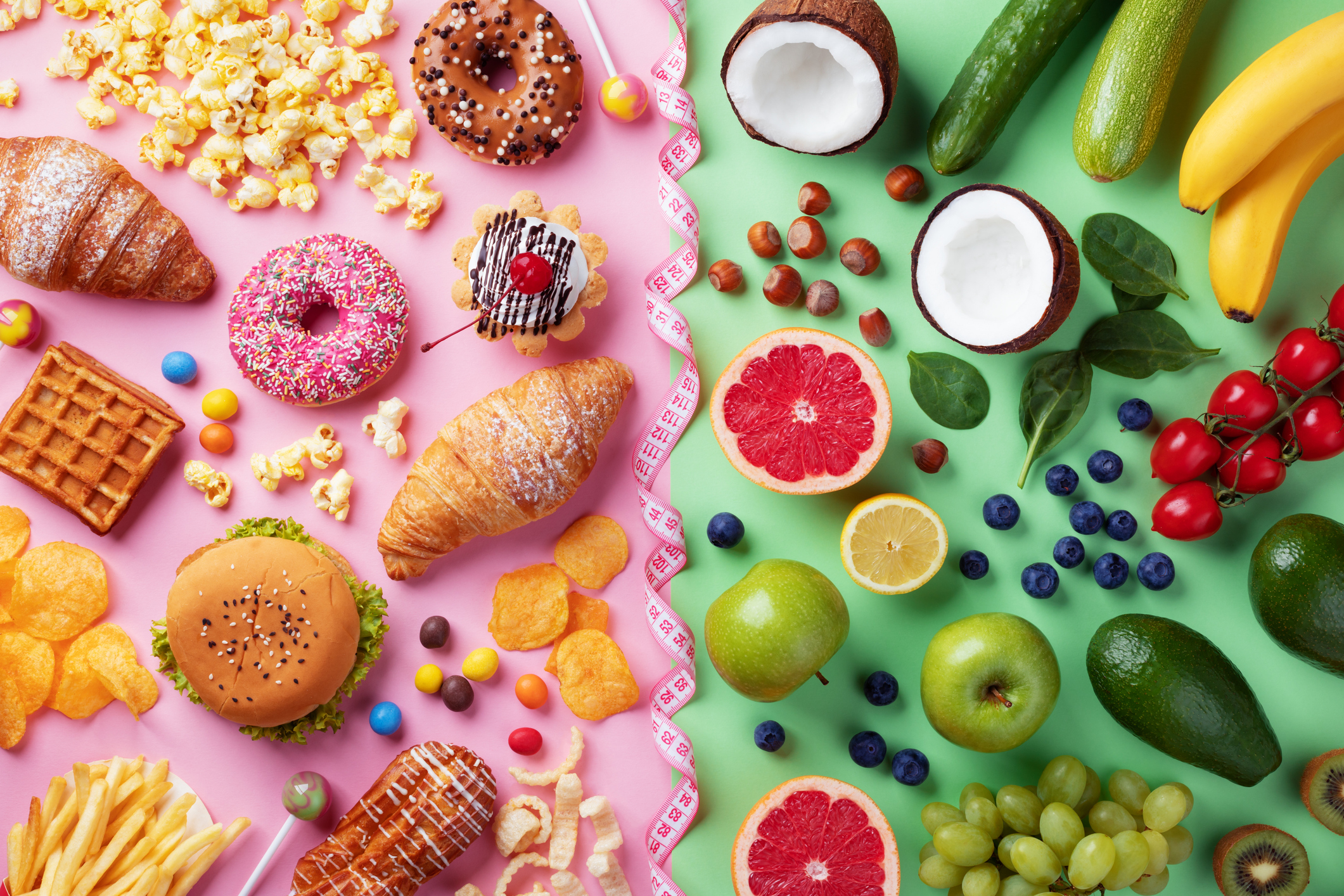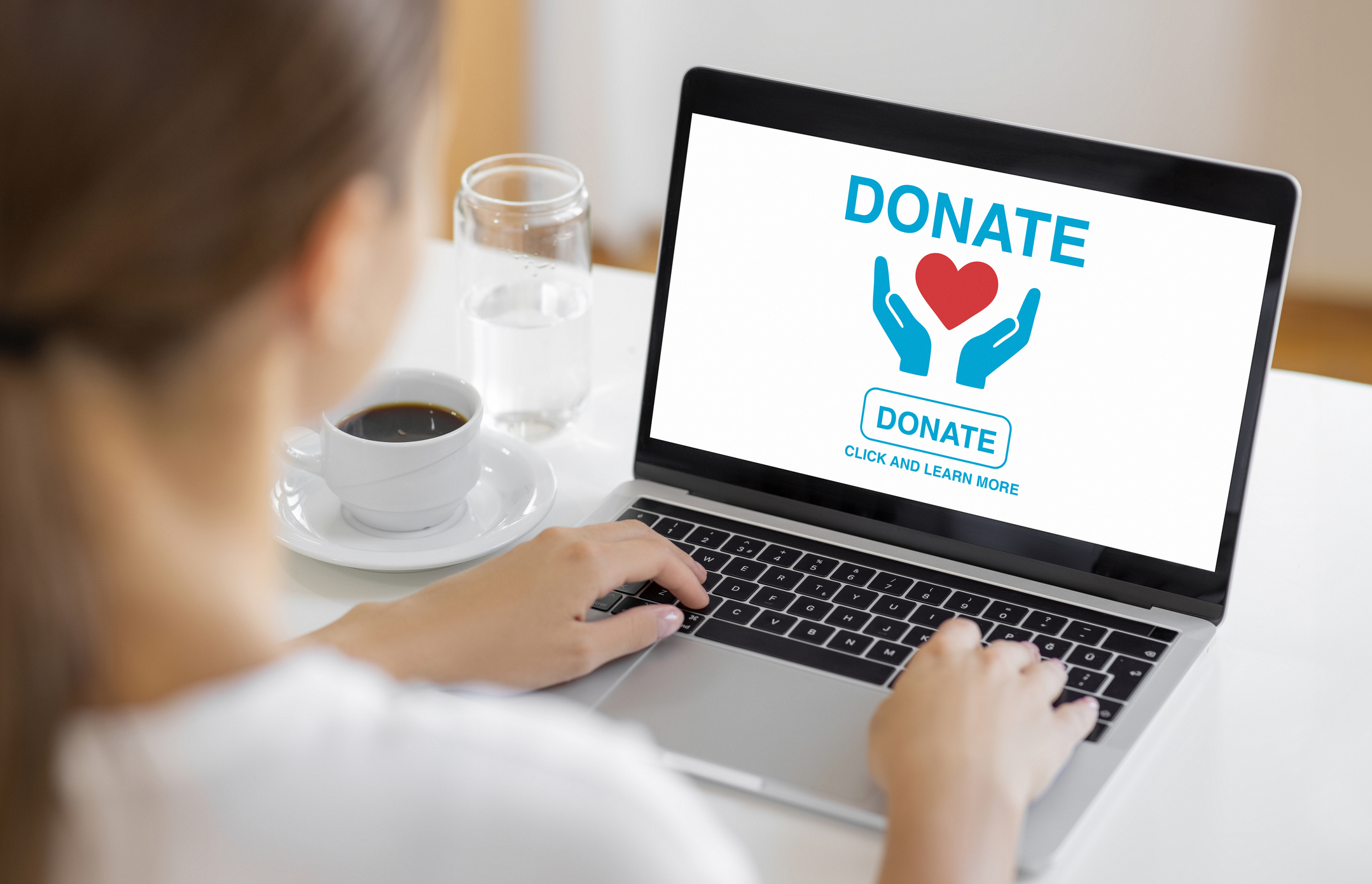Over 50 and Can’t Stop Snacking? Here's How to Beat Junk Food Addiction
Giving up ultra-processed food is hard. Here's why so many of us reach for the junk and how to gradually kick the habit.


Picture this scenario: You're sitting on the sofa with a bag of pretzels, cookies, or your favorite salty or savory snack of choice. You eat one, two, just a couple more, and before you know it, you look down and the entire bag is gone.
If this is a common occurrence in your home, your eating habits may not just be unhealthy. They may actually have been shaped by a surprising force that's caused you to become one of the many Americans who, a new study found, suffer from ultra-processed food addiction (UPFA).
The study addressed addiction rates, as well as the root causes of troubling eating habits, and you may be shocked to discover who influenced the contents of your pantry, as well as who is most likely to be an addict.
From just $107.88 $24.99 for Kiplinger Personal Finance
Become a smarter, better informed investor. Subscribe from just $107.88 $24.99, plus get up to 4 Special Issues

Sign up for Kiplinger’s Free Newsletters
Profit and prosper with the best of expert advice on investing, taxes, retirement, personal finance and more - straight to your e-mail.
Profit and prosper with the best of expert advice - straight to your e-mail.
You probably won't be surprised at the effects of this addiction, though, as ultra-processed foods are one of the few things so nefarious that even our politically divided country agrees that something must be done. But overhauling a food system takes years, even decades. In the meantime, we've got simple suggestions for how to kick the junk food habit.
What are ultra-processed foods?
Ultra-processed foods (UPFs) tend to rely on industrial ingredients not found naturally. They often include ingredients and additives "not generally used in home cooking and contribute to excess calorie consumption. Most are characterized by being low in nutritional quality and high in saturated fats, added sugars, and sodium (salt)," according to the Yale School of Public Health. They may have been developed to replace a more expensive ingredient, to enhance color or taste, or to extend shelf life.
Here are examples of foods that are not processed, up to those that are ultra-processed, according to Dahlia Perelman, a Stanford Medicine dietitian. While these categories are helpful, they are not hard and fast rules. As Perelman points out, "Cheerios are ultra-processed, ... but they contain whole grain oats and are low in added sugar, making them more nutrient-dense than many other packaged cereals."
Level of Processing | Examples |
|---|---|
Unprocessed or Minimally Processed | Vegetables, fruits, beans, nuts, seeds, eggs, meat, poultry, pasta, plain yogurt and coffee. |
Processed culinary ingredients | Sugar, honey, maple syrup, vegetable oils, butter and vinegar. |
Processed foods | Cured meat, canned fish, canned vegetables, most cheeses and freshly made bread (such as from a local bakery). |
Ultra-processed foods | Commercially produced breads, most breakfast cereals, flavored yogurts, hot dogs, frozen meals, potato chips, soft drinks and candy bars. |
Source: Adapted from John Sanford, Ultra-processed Food, Five Things to Know, Stanford Medicine, July 15, 2025.
Are you an ultra-processed food addict?
Americans aren't exactly known for their excellent eating habits, but the hard numbers are shocking. Among U.S. adults, an estimated 60% of total energy intake comes from ultra-processed foods.
Unfortunately, for many older Americans, these UPFs are more than just a meal.
University of Michigan researchers used criteria set by the Yale Food Addiction Scale to investigate the prevalence of UPFA among adults aged 50 and over.
They found that 21% of women and 10% of men aged 50 to 64 meet the definition of addicts. This is a much higher rate than among those ages 65 to 80, among whom just 12% of women and 4% of men meet addiction criteria.
This means if you came of age in the 1970s and the 1980s (hello, Gen X), you're much more likely to be an ultra-processed food addict. You're also more likely to be addicted if you are:
- A woman: 16.9% of older adult women suffered from UPFA while just 7.6% of older men did.
- Overweight: 33% of women and 17% of men who described themselves as overweight met criteria for addiction to ultra-processed foods.
- Isolated: Isolated men and women were more than three times as likely to be addicted.
- Struggle with mental health issues: Men with fair or poor mental health were four times as likely to be addicts, and women with these mental health issues were nearly three times as likely.
- In poor health: Men who said their health was poor or fair were three times as likely to be addicted to UPF, and women with the same health status were close to twice as likely to meet addiction criteria.
Ultra-processed food marketing during a critical stage helped make addicts out of Americans
Ultra-processed foods are designed with additives that enhance flavor and texture, along with palatable ingredients that make the foods as delicious as they are unhealthy. These properties of UPFs make them attractive to everyone, so why are some Americans more likely to be addicted than others?
University of Michigan researchers believe this may be by design, as marketing experts with a history of harming Americans became heavily involved in marketing UPFs during a critical time of development for the most addicted group of adults.
"The 1970s and 1980s have been identified as a key period when UPFs became more common in the US food supply, and the degree of added sugars and saturated fats also rose rapidly during this time," the researchers wrote in the journal Addiction. "This increase in UPFs coincides with the increased involvement of tobacco companies in developing, producing, and marketing UPFs."
That's right. Fresh off its success in convincing Americans that cigarettes are cool instead of killers, a U.S. tobacco company bought Hawaiian Punch in 1963. This started a trend of tobacco companies working on finding innovative new ways to profit from addiction by producing chemically-laden foods marketed to vulnerable groups.
Sadly, the University of Michigan research shows it worked.
Ultra-processed foods gained a foothold the 1970s and 1980s
Adults who grew up in the 1970s and 1980s were the first to experience a childhood, adolescence, and early adulthood during a time when ultra-processed foods became more mainstream.
As a result, they were more likely to consume these foods during developmental periods when the risk of addiction is greatest due to increased sensitivity to rewards, emotional dysregulation, and impulsivity.
Not only did fast food chains multiply, grocery store aisles fill with UPFs, and colorful characters convince us that sugary cereals were the breakfast of champions, but some UPFs were actually billed as the answer to better health. This included things like low-cal frozen dinners, 100-calorie snack packs, and fat-free desserts.
The problem is, while these products may not have had sugar or calories, they were far from the types of good, healthy foods the body needs… and marketing convincing far too many women they were the secret to a slim waist helps to explain why so many women are UPF addicts even while addiction is traditionally a more male trait.
"Women aged 50–64 years today were in a potentially vulnerable developmental period during the rise of these diet UPFs, perhaps consuming them under the misconception that they would aid in weight loss while actually reinforcing addictive eating patterns," researchers explained. "These factors may have converged to contribute to the particularly high level of UPFA for women aged 50–64 years in the current study."
The downside of ultra-processed foods
There is ample research on the damages of ultra-processed foods, and we won't rehash much of it here, other than to note that when UPF makes up a significant part of your diet, you are at greater risk of:
- Dementia
- Cancer
- Over two dozen other health issues, including increased mortality and mental, respiratory, cardiovascular, gastrointestinal, and metabolic problems.
How to break up with ultra-processed foods
There are several policy levers that federal and state governments could employ to reduce the consumption of UPF. Making this food less available and requiring food companies to improve its safety is a first step. But these changes will take time. What can you do right now to improve your health?
Giving up UPFs is hard — because it's designed to be hard.
That doesn't mean you have to accept that these foods have to be staples in your diet. Some of the steps you can take to reduce, or even eliminate, ultra-processed foods include the following:
- Stick to the perimeter of the supermarket: The produce, dairy, and fish and meat sections all contain the foods you should be eating, so steer clear of the center aisles that are chock full of heavily marketed UPFs.
- Check food labels: Be on the lookout for added salt, sugars, and chemical ingredients. Ignore the health claims on the front of a package and focus on the Nutrition Facts and Ingredients on the back.
- Batch cook: It can be a hassle to cook a fresh meal every day. Prepare a few large batches of healthy home-cooked items, or even double recipes when you cook, to create a stockpile of healthy meals in your freezer.
- Meal plan: When you don't know what to eat, grabbing something pre-packaged or frozen seems convenient. Make a weekly plan for what to eat, and try to keep the foods fresh and varied.
- Keep healthy snacks on hand. Instead of buying chips or prepared snacks, keep your pantry full of fruits, cut-up veggies, and nuts to grab when you're hungry or are on the go.
- Eliminate refined grains: White pasta, bread, and rice can easily be swapped for healthier alternatives like brown rice and whole-grain bread.
- Choose your restaurants carefully: You don't have to give up eating out. Just be mindful of which restaurants you choose and opt for things like salads and fish. Johns Hopkins has developed a "stoplight" strategy for healthy restaurant choices.
- Ditch the soda: Gradually substitute regular and diet soda with water, coffee or tea. Invest in high-quality (not plastic) water bottles so you don't get tempted when you're out of the house.
Taking even a few of these steps can make a big difference in your overall health. You may also notice that your palate changes. Where soda used to taste delicious, it's much too sweet when you've avoided it for a few weeks. Similarly, your "salt tooth" may lessen, and you'll find potato chips don't have the allure they once did.
Getting over UPF addiction may not be a one-day project, but any inroads you can make toward clean eating can help you improve your health. If you can kiss the donuts goodbye and start counting on traditional, healthy foods, your body will thank you.
Read More
Profit and prosper with the best of Kiplinger's advice on investing, taxes, retirement, personal finance and much more. Delivered daily. Enter your email in the box and click Sign Me Up.

Christy Bieber is an experienced personal finance and legal writer who has been writing since 2008. She has been published by Forbes, CNN, WSJ Buyside, Motley Fool, and many other online sites. She has a JD from UCLA and a degree in English, Media, and Communications from the University of Rochester.
-
 Holiday Tax Scams: 'Tis the Season to be Wary
Holiday Tax Scams: 'Tis the Season to be WaryTax Scams Navigating tax tricks of the holiday season may be daunting, but don't let that destroy your festive spirit
-
 Metro by T-Mobile Is Giving Away This Samsung Galaxy A16: Which Plans Are Eligible?
Metro by T-Mobile Is Giving Away This Samsung Galaxy A16: Which Plans Are Eligible?Metro by T-Mobile is offering free Samsung Galaxy A16 phones on eligible plans right now. Here’s how the deal works.
-
 I Drive and Collect Classic Cars: Here’s How I Got Started
I Drive and Collect Classic Cars: Here’s How I Got StartedAre classic cars a hobby or an investment strategy — or both? Either way, the vintage car scene is much cooler and more affordable than you think.
-
 I Drive and Collect Classic Cars: Here’s How I Got in the Game Without Spending a Fortune
I Drive and Collect Classic Cars: Here’s How I Got in the Game Without Spending a FortuneAre classic cars a hobby or an investment strategy — or both? Either way, the vintage car scene is much cooler and more affordable than you think.
-
 The $183,000 RMD Shock: Why Roth Conversions in Your 70s Can Be Risky
The $183,000 RMD Shock: Why Roth Conversions in Your 70s Can Be RiskyConverting retirement funds to a Roth is a smart strategy for many, but the older you are, the less time you have to recover the tax bite from the conversion.
-
 A Financial Pro Breaks Retirement Planning Into 5 Manageable Pieces
A Financial Pro Breaks Retirement Planning Into 5 Manageable PiecesThis retirement plan focuses on five key areas — income generation, tax management, asset withdrawals, planning for big expenses and health care, and legacy.
-
 4 Financial To-Dos to Finish 2025 Strong and Start 2026 on Solid Ground
4 Financial To-Dos to Finish 2025 Strong and Start 2026 on Solid GroundDon't overlook these important year-end check-ins. Missed opportunities and avoidable mistakes could end up costing you if you're not paying attention.
-
 Are You Putting Yourself Last? The Cost Could Be Your Retirement Security
Are You Putting Yourself Last? The Cost Could Be Your Retirement SecurityIf you're part of the sandwich generation, it's critical that you don't let the needs of your aging parents come at the expense of your future.
-
 The Retirement Donor's Checklist: Key Deadlines by Gift Type
The Retirement Donor's Checklist: Key Deadlines by Gift TypeRetirees have some charitable contribution options that can help avoid spikes in income from RMDS and capital gains.
-
 I'm 73, Retired, and Dreading Winter, But I Can't Afford to Be a Snowbird. Help!
I'm 73, Retired, and Dreading Winter, But I Can't Afford to Be a Snowbird. Help!How can a snowbird wannabe warm up without the expense? We asked professional wealth planners for advice.
-
 5 Smart Things to Do With Your Year-End Bonus, From a Financial Professional
5 Smart Things to Do With Your Year-End Bonus, From a Financial ProfessionalAfter you indulge your urge to splurge on a treat, consider doing adult things with the extra cash, like paying down debt, but also setting up a "fun fund."